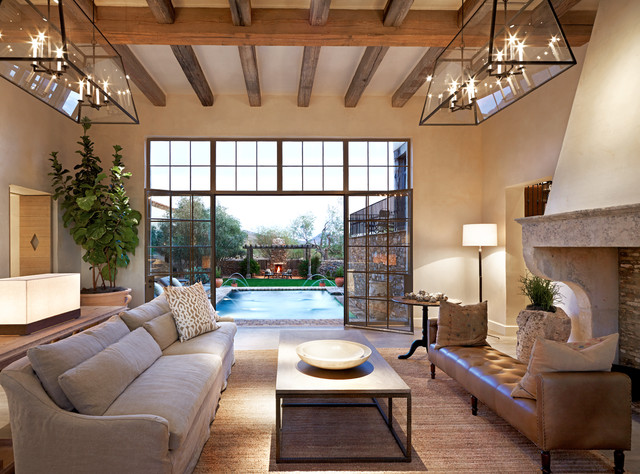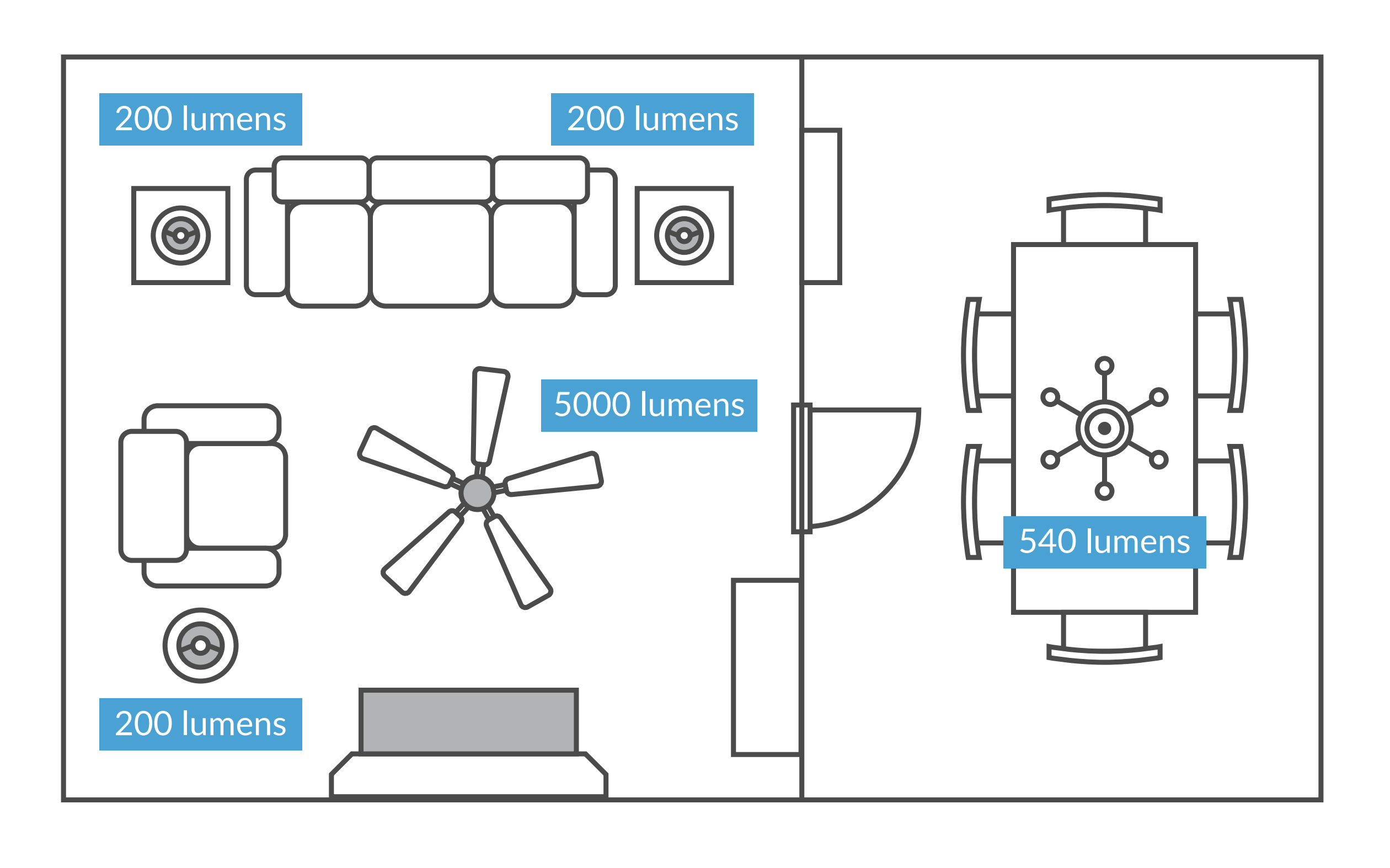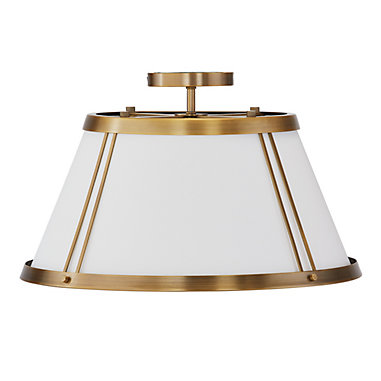- This topic is empty.
-
AuthorPosts
-
March 8, 2022 at 1:34 pm #48550
Overhead light fixtures
Best for use on dreary weather or naturally dark rooms during the day time. Not recommended for use at night unless on a dimmer, but even when using a dimmer these fixtures cast unflattering downlighting on faces at night. The exception would be using an overhead chandelier in a dining room at night, but that lighting is much closer to eye level than a ceiling height overhead fixture. Look for:
- Fixture that’s properly sized. Size is determined by taking the length of your room in feet + depth of your room in feet = diameter of the fixture in inches. Example: 12′ length of room + 18′ depth of room = 30″ diameter fixture. If you cannot find a large enough fixture to center in the area to be list, try to use two smaller fixtures spaced evenly in the room. Two examples show this, but I dislike the metal and glass fixtures because of the shadows that will be cast during darker times of the day.


- Fixture with at least (4) bulb sockets. (1)+ bulb to point at each corner of the room.
- Fixture with shade or bulb diffusers. This way the bare bulbs don’t cast shadows of the fixture’s metal work on the walls and/or faces of occupants. Example of a good fixture.
Wall sconce fixtures
Wall sconces are a favorite for people with children because they can’t be knocked off the wall like a table lamp can be knocked over. More importantly, they provide a layer of eye level lighting which warms up a space, is very flattering to the occupants, and add sculptural interest to walls. Wall sconces come in hardwired varieties or plug-in varieties as shown in the following example. They can be placed anywhere you nee a little light at night or on overcast days. Don’t get caught up on having your sconce placement be perfectly symmetrical. Aim for putting light where it is needed.

Table lamp fixtures
As mentioned in the sconce section, eye level lighting (between 58″ and 64″ from the ground) is the most flattering. Since most end tables are about 26″-30″ tall, you should aim for a lamp sized 28″-32″ tall to sit on top of it. This will put the light about 60″ off the ground. If the lamp is on a taller console table, the lamp height could be shorter, but not too short or it won’t have enough visual presence. You can always put a shorter lamp on a box, pedestal, or a few thick books to give it a little more implied height.
The width of the table lamp is also important. Make sure that the lamp isn’t wider than half the width of the table. Example: a 28″ diameter table shouldn’t have a lamp shade that is more than 14″ wide….but of course this rule is more of a guideline. If you have a 16″-20″ wide shade on a 28″ table, it isn’t’ the end of the world and could even look very bold and chic! You just don’t want a table lamp with a shade that’s wider than the table as it can be knocked off much more easily.

Floor lamp fixtures
Floor lamps for tasks like reading in a specific chair (like a pharmacy style floor lamp) can be shorter as shown here, but general floor lamps should also be sized about 50″-65″ tall.

Varying light fixture heights in the room
You do not need to obsess about having light fixtures at different heights in the room. In fact, the worst rooms have all of the furniture and lighting at roughly the same height, cutting the room cleanly into an upper [blank] portion and a lower [furnished] portion of the room. Think instead of how you can add taller points (perhaps with light fixtures) to the room to draw your eye to those areas and then the eye will fall gently settle below to the nearby furnishings.
LED Light bulbs
Don’t let LED bulbs freak you out. Once you understand all the specifications you need for a light fixture, you just need to use search parameters to filter down your options. I like Bulbs.com or a similar website to quickly search using the my specs.
- Bulb shape: This is the shape of the glass portion of the light bulbs. Make sure it matches your light fixture’s requirements. A19 is the shape of most “classic” light bulbs.
- Bulb base shape: The size of the bulb’s screw in base can be different in size. E26 is the size of most “classic” light bulb bases.
- Bulb brightness: Light bulbs used to state how much brightness they put out by the watts of energy they required when turned on. Now, LED bulbs state the number of lumens they put out to measure brightness, while the watts used are much smaller. You can calculate how many lumens you need in a space using this link.

- Bulb light temperature: Incandescent bulbs were all visually somewhat warm. LED Bulbs cast a range of warm to cool light, measured on a scale with k. 1000k (VERY WARM–think of the light cast by fire) – 7000k (VERY COOL–think Surgical Room). If you like the look of incandescent light bulbs, shoot for 2750k-2900k.
- Bulb color accuracy: On a scale of 0-100, a light bulb’s Color Rendering Index score describes how well a bulbs renders visible colors. It is an average of how well it renders each colors. 100 is a perfect score (like natural light from the sun), and anything below 80 would be considered unacceptable color rendering. If you cannot find a CRI score, don’t buy the light bulb, because it will possibly make your colors look very wrong!
- My favorite bulbs 90% of lamp fixtures: GE Relax Bulbs: A19/2700K/90 CRI/800 Lumens/dimmable
- My favorite bulbs for rooms with a lot of white, red, oranges, and pinks: Whites and colors from the Red family are notoriously difficult to render well under light bulbs, even those with CRI scores greater than 85. For spaces with a lot of whites or reds/oranges/pinks, I like a type of light bulb with very high scores within the CRI for r9 (red) and r0 (white), SORAA.
- Dimmability: If you want to be able to dim your LED bulbs, you need to ensure they are labeled “dimmable”. I recommend getting dimmable bulbs if only so you have the option at some point, given how long these bulbs last.
- Fixture that’s properly sized. Size is determined by taking the length of your room in feet + depth of your room in feet = diameter of the fixture in inches. Example: 12′ length of room + 18′ depth of room = 30″ diameter fixture. If you cannot find a large enough fixture to center in the area to be list, try to use two smaller fixtures spaced evenly in the room. Two examples show this, but I dislike the metal and glass fixtures because of the shadows that will be cast during darker times of the day.
-
AuthorPosts
- You must be logged in to reply to this topic.



Recent Comments